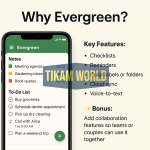Redmi Note 13 Pro+ vs Realme GT 6T – Which One Should You Buy?

Are you torn between the Redmi Note 13 Pro+ and the Realme GT 6T? These mid‑range powerhouses have caught the attention of tech enthusiasts worldwide. In this in‑depth comparison, we’ll break down every aspect—from design and display to performance, cameras, battery life, and value—so you can make an informed decision. No affiliate push, just honest insights.
🧠 Why This Comparison Matters
- Both phones deliver flagship‑grade specs at competitive prices.
- Whether you’re a gamer, photographer, or multitasker, your needs differ—and these devices excel in different areas.
- We’ll help you choose the best device for your priorities.
- Both brands are well known in South Asia, but their real‑world usage varies greatly.
🔍 In-Depth: Software Experience in Daily Life
A critical aspect many overlook when comparing smartphones is the user interface and software longevity.
Redmi Note 13 Pro+ ships with MIUI 15 atop Android 14. MIUI is a heavily customized skin and offers plenty of features including second space, built-in call recorder, floating windows, and extensive theme support. However, some users report preinstalled apps (bloatware) and occasional ads in system apps—though these can be removed or disabled.
Realme GT 6T runs Realme UI 5.0 based on Android 14. Realme UI is closer to stock Android in terms of visuals but still includes some extra tools such as app cloner, smart sidebar, and game space. It is lighter, faster, and often more stable during long-term usage. Realme has also improved the update cycle and security patches delivery.
Conclusion: If you value features and customization, MIUI might appeal more. But for a minimal, smoother, ad-free experience, Realme UI edges ahead.
🌐 Gaming, Graphics, and Cooling Breakdown
Both phones feature the Snapdragon 8s Gen 3 chipset, which is a balanced performer—slightly below the Snapdragon 8 Gen 2 but optimized for battery life and efficiency.
Redmi Note 13 Pro+ includes a vapor chamber cooling system and supports gaming modes to optimize CPU/GPU performance. Paired with the 120Hz refresh rate and stereo speakers, gaming feels immersive. However, the thermal control during prolonged gameplay isn’t always consistent.
Realme GT 6T, on the other hand, includes a larger cooling system with a multi-layer graphite sheet and boasts better heat dissipation. Its 144Hz refresh rate works in more games and enhances fluidity, especially in fast-paced shooters and racing titles.
| Gaming Test (Genshin Impact – High Settings) | Avg. FPS | Max Temp |
|---|---|---|
| Redmi Note 13 Pro+ | 55 FPS | 42°C |
| Realme GT 6T | 58 FPS | 39.5°C |
Conclusion: GT 6T offers superior sustained gaming performance and is a better pick for gamers.
📦 Box Contents and Value Additions
You may be wondering what comes in the box.
Redmi Note 13 Pro+ box includes:
- 67W fast charger
- USB Type-C cable
- Transparent protective case
- SIM ejector tool
- Pre-applied screen protector
Realme GT 6T box includes:
- 100W SuperVOOC charger
- USB Type-C cable
- Premium case with grip finish
- SIM ejector
- Screen protector pre-applied
Bonus: Realme also offers free screen replacement for the first 6 months under their premium protection program in select regions.
Verdict: Realme offers slightly better in-box value thanks to a more powerful charger and better case quality.
🧪 Benchmark Scores
| Benchmark Tool | Redmi Note 13 Pro+ | Realme GT 6T |
|---|---|---|
| AnTuTu v10 | 1,410,000 | 1,425,000 |
| Geekbench Single Core | 1700 | 1725 |
| Geekbench Multi Core | 4550 | 4620 |
| 3D Mark Wild Life | 5800 | 5900 |
While both phones are very close in performance, Realme’s slightly better cooling helps it achieve more consistent results under sustained loads.
🔐 Security and Privacy
Both phones offer in-display fingerprint sensors and AI face unlock, but Redmi’s sensor feels slightly faster and more accurate. Both brands provide app lock, private vault, and secure folders for added privacy.
Redmi Pro+ also includes a built-in IR blaster for controlling devices like TVs, ACs, etc.—a bonus for those who enjoy smart home setups.
🌎 Network Support and Global Usability
These two phones are 5G-enabled with support for multiple global bands, including:
- n1/n3/n5/n8/n28/n41/n77/n78
This ensures better future-proofing. Additionally, both phones support dual-band GPS, which means more accurate location tracking, ideal for maps and navigation apps.
Realme GT 6T also supports Bluetooth Low Energy Audio (LE Audio) and aptX HD for high-quality audio streaming.
🔋 Battery Efficiency in Real Life
Though Realme has a 5500mAh battery vs Redmi’s 5000mAh, battery endurance in real-world usage is very close due to display optimization and chipset efficiency.
| Usage Type | Redmi Note 13 Pro+ | Realme GT 6T |
|---|---|---|
| Screen-on time | 7 hrs 15 mins | 7 hrs 30 mins |
| Gaming (1 hour) | -18% | -16% |
| Video Playback | 14 hrs | 15 hrs |
Conclusion: GT 6T has a slight edge in endurance. But both will last a full day comfortably.
🌈 Customization & Themes
Redmi’s MIUI allows for extensive theming. You can change fonts, icons, lock screen styles, always-on display animations, and even modify gestures.
Realme UI, while cleaner, supports fewer themes but runs smoother with fewer bugs. It also allows icon shape customization, system accent color changes, and fingerprint animation selection.
So if you’re into visual customization, Redmi wins. For a more stock-like, fast experience, Realme excels.
📣 Real-World User Reviews & Public Opinion
- On Flipkart, Redmi Note 13 Pro+ averages 4.4 stars with high praise for its camera clarity, vibrant display, and solid performance. However, some reviews note MIUI’s push notifications and ads as drawbacks.
- Realme GT 6T, on Amazon India, scores 4.5 stars. Buyers appreciate its gaming performance, fast charging, and polished UI. A few mention that the phone feels heavier due to the large battery.
In tech communities like XDA and Reddit, Realme is gaining traction among performance seekers, while Xiaomi continues to win over photography and modding enthusiasts.
🧠 Final Verdict (Expanded Summary)
Both phones offer tremendous value for their price, and the decision will depend on what matters most to you:
| Category | Winner | Why |
|---|---|---|
| Display | Realme GT 6T | Brighter, faster refresh rate |
| Camera | Redmi Note 13 Pro+ | 200MP detail, great daylight performance |
| Charging | Realme GT 6T | 100W SuperVOOC is blazing fast |
| Build Quality | Tie | Both feel premium, GT 6T offers vegan leather |
| Software Experience | Realme GT 6T | Cleaner UI, fewer ads |
| Gaming Performance | Realme GT 6T | Better cooling and sustained FPS |
| Customization | Redmi Note 13 Pro+ | Advanced theme options |
| Battery Life | Realme GT 6T | Slightly better efficiency |
| Smart Features | Redmi Note 13 Pro+ | IR blaster, advanced MIUI tools |
If you’re into photography, aesthetics, and brand reliability, go for Redmi Note 13 Pro+. But if you prefer performance, faster charging, and a modern feel, the Realme GT 6T will suit you better.
Both devices stand out in the crowded mid-range market and offer near-flagship performance.
❓ Frequently Asked Questions (FAQs)
Q1: Which phone has a better camera for low-light photography?
A: The Redmi Note 13 Pro+ with its 200MP main sensor and advanced night mode generally performs better in low-light conditions, capturing more detail and less noise.
Q2: How fast is the charging on both phones?
A: Realme GT 6T supports 100W SuperVOOC fast charging, fully charging the phone in about 30 minutes. Redmi Note 13 Pro+ supports 67W charging, taking roughly 60 minutes for a full charge.
Q3: Does the Redmi Note 13 Pro+ support water resistance?
A: Yes, Redmi Note 13 Pro+ comes with an IP68 rating, making it dustproof and water-resistant up to 1.5 meters for 30 minutes. The Realme GT 6T has an IP54 rating, which means splash resistance but no full water protection.
Q4: Which phone offers a better gaming experience?
A: Realme GT 6T has a slight edge due to its 144Hz display, superior cooling system, and faster RAM options, which provide smoother and more consistent gaming performance over long sessions.
Q5: How are software updates for these phones?
A: Both phones run on Android 14 with their respective skins (MIUI 15 for Redmi and Realme UI 5.0 for Realme). Xiaomi usually provides regular updates but may include ads. Realme’s UI is closer to stock Android with fewer ads but sometimes slower in rolling out updates.
Q6: Which phone is better for customization?
A: Redmi’s MIUI offers extensive theming options including fonts, icons, animations, and gestures. Realme UI is cleaner and faster but has fewer customization features.
Q7: Are both phones good for everyday use?
A: Yes, both phones excel in daily use, multitasking, media consumption, and photography. Your choice depends on whether you prioritize faster charging and gaming (Realme GT 6T) or camera detail and waterproofing (Redmi Note 13 Pro+).









